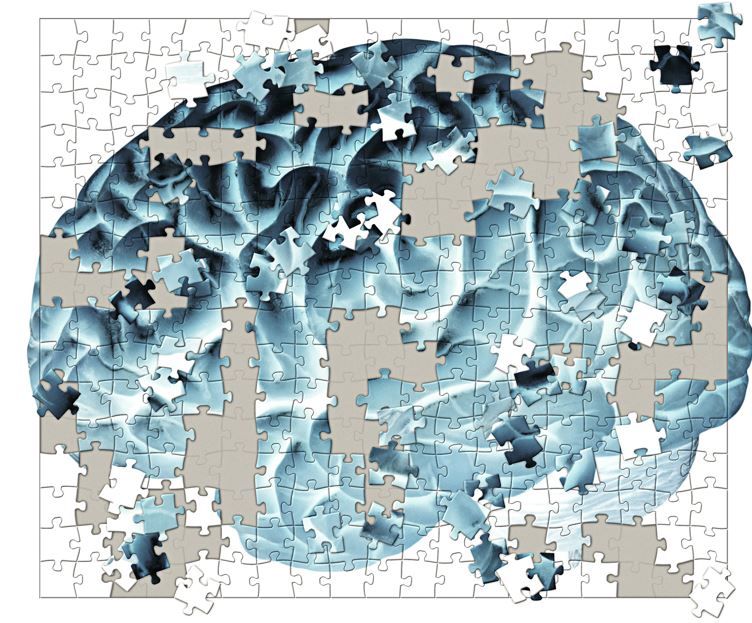- Clinical Technology
- Adult Immunization
- Hepatology
- Pediatric Immunization
- Screening
- Psychiatry
- Allergy
- Women's Health
- Cardiology
- Pediatrics
- Dermatology
- Endocrinology
- Pain Management
- Gastroenterology
- Infectious Disease
- Obesity Medicine
- Rheumatology
- Nephrology
- Neurology
- Pulmonology
New Long-Term Data Suggest Continued Blarcamesine Efficacy in Alzheimer Disease Up to 4 Years
Blarcamesine significantly slowed progression of both cognitive and functional decline, with treatment initiated earlier in disease process more effective than that initiated later.
Recent findings from the ATTENTION-AD trial demonstrated that long-term treatment with oral blarcamesine (ANAVEX2-73) significantly reduces clinical decline in patients with early Alzheimer’s disease, demonstrating continued cognitive and functional benefits over a period of up to 4 years.1
©Visualmind/stock.adobe.com

In addition, a delayed-start analysis of treatment with the investigational sigma-1 receptor agonist found a significant difference in outcome that underscores the importance of early initiation of treatment. In the study, conducted by Anavex Life Sciences Corp, blarcamesine treatment also was associated with a favorable safety profile, with no new safety concerns observed, the company said in a January 13 news release.1
Anavex plans to present the trial findings at the AD/PD 2025 International Conference on Alzheimer's and Parkinson's Diseases and Related Neurological Disorders, April 1-5, in Vienna, Austria.
The ATTENTION-AD trial followed a 48-week double-blind clinical trial with an open-label extension (OLE) phase lasting up to 144 weeks. Participants in North America and Europe underwent OLE treatment for 96 weeks, while those in Australia were treated for up to 144 weeks.1
Cognitive benefits. Topline efficacy data from the delayed-start analysis demonstrated significant benefits for patients who began blarcamesine treatment earlier in disease progression. Using the Alzheimer’s Disease Assessment Scale-Cognitive Subcale-13 (ADAS-Cog13) a measure of cognitive function, early-start patients showed a clinically meaningful improvement at week 144 (LS mean difference: -2.70; P =.035), with an even greater difference that reached statistical significance observed at week 192 (LS mean difference: -3.83; P =.016). Notably, differences exceeding 2 points on the ADAS-Cog13 scale are considered clinically meaningful, according to the press release.
Functional benefits. Findings from delayed-start analysis on the Alzheimer’s Disease Cooperative Study-Activities of Daily Living (ADCS-ADL) Scale, a measure of daily living function, also favored early- vs delayed-start participants with the cohort showing a numerical improvement at week 144 (LS mean difference: +2.32; P =.125). The treatment difference continued to increase up to week 192, reaching a statistically significant benefit (LS mean difference: +4.30; P =.021), Anavex said.
These results suggest that initiating treatment with blarcamesine earlier may stabilize cognitive function and enhance daily living abilities over the long-term compared to delayed treatment.
"Alzheimer disease, like other chronic progressive diseases, requires a long-term therapeutic strategy. Blarcamesine mechanism of action with its convenient once daily oral dosing supports long-term therapy," Christopher U Missling, PhD, president and chief executive officer at Anavex, said in the statement.1 Missling points to the convenience of oral dosing and the favorable comparative safety profile as features that "could reduce crucial barriers within the currently complex healthcare ecosystem for Alzheimer disease and potentially provide broader access to a diverse population with early Alzheimer disease."1
Blarcamesine was well tolerated, with most adverse events (AEs) categorized as mild to moderate in severity. The most common treatment-emergent AE was dizziness, predominantly occurring during the initial titration phase. Adjustments to the titration schedule reduced the incidence of dizziness from 25.2% in the preceding trial (ANAVEX2-73-AD-004) to 9.6% in the ATTENTION-AD trial. Importantly, no severe or life-threatening adverse events or deaths were attributed to the drug.
Other safety metrics, including vital signs, laboratory tests, physical examinations, and electrocardiograms, revealed no concerning patterns or clinically significant findings, further supporting the long-term safety of blarcamesine for patients with early Alzheimer’s disease.1
The convenience of oral dosing and the favorable comparative safety profile "could reduce crucial barriers within the currently complex healthcare ecosystem for Alzheimer disease and potentially provide broader access to a diverse population with early Alzheimer disease."
There are currently 74 participants receiving blarcamesine through a Compassionate Use Program with some having been treated for more than 9 years after completing OLE studies of blarcamesine in both early and mild-to-moderate AD. There have been no severe or life-threatening adverse events attributed to the therapy.1
In the original 48-week AD-004 trial, participants were randomly assigned to either blarcamesine at 30 mg (n = 170) or 50 mg (n = 168) doses, or placebo (n = 170). Treatment with the investigational drug resulted in significant slowing of clinical decline by 38.5% in the 50 mg group and by 34.6% in the 30-mg group, relative to placebo, as measured by ADAS-Cog13, the primary cognitive end point. The functional co-primary end point, change in ADCS-ADL, was trending positive but did not reach statistical significance at week 48.2,3
Additional data from the double-blind portion showed that after 48 weeks, blarcamesine significantly reduced brain atrophy compared to placebo (P <.001), slowing atrophy by 37.6% in whole brain volume (P = .0019), 63.5% in total gray matter (P = .0035), and 25.1% in lateral ventricles (P = .0015), with no significant difference observed in total white matter (P = .8318).2,3
Anavex has also completed a phase 2 proof-of-concept study in Parkinson's disease dementia with blarcamesine, and both a phase 2 and a phase 3 study in adult patients and one phase 2/3 study in pediatric patients with Rett syndrome.
